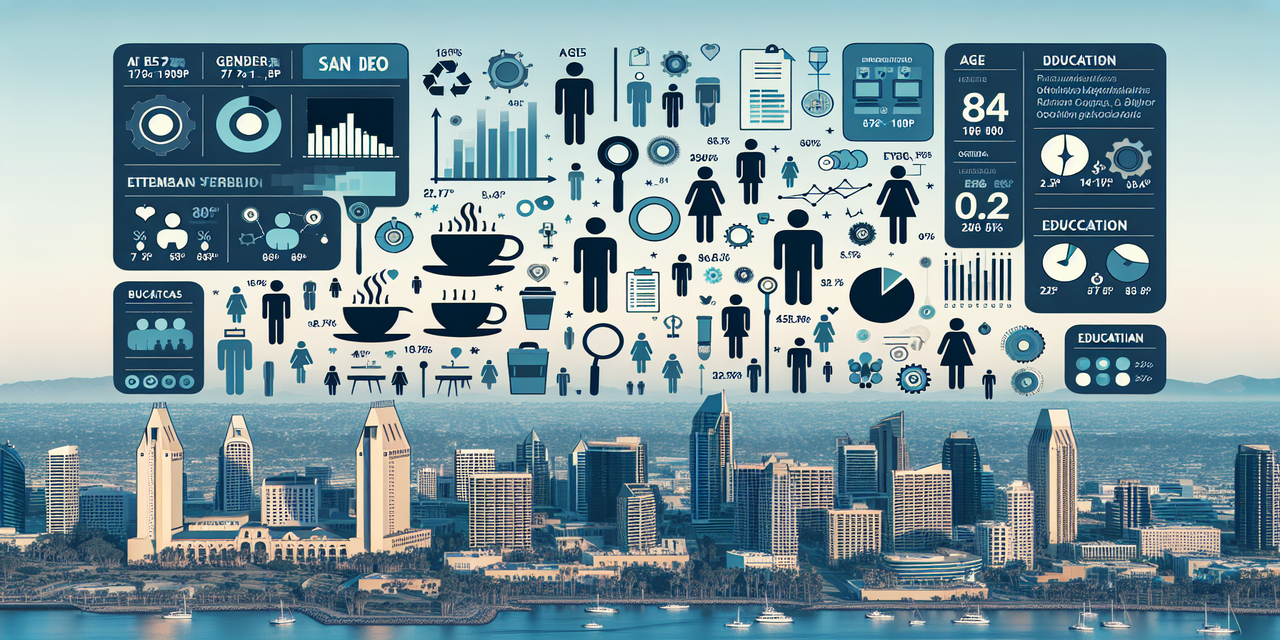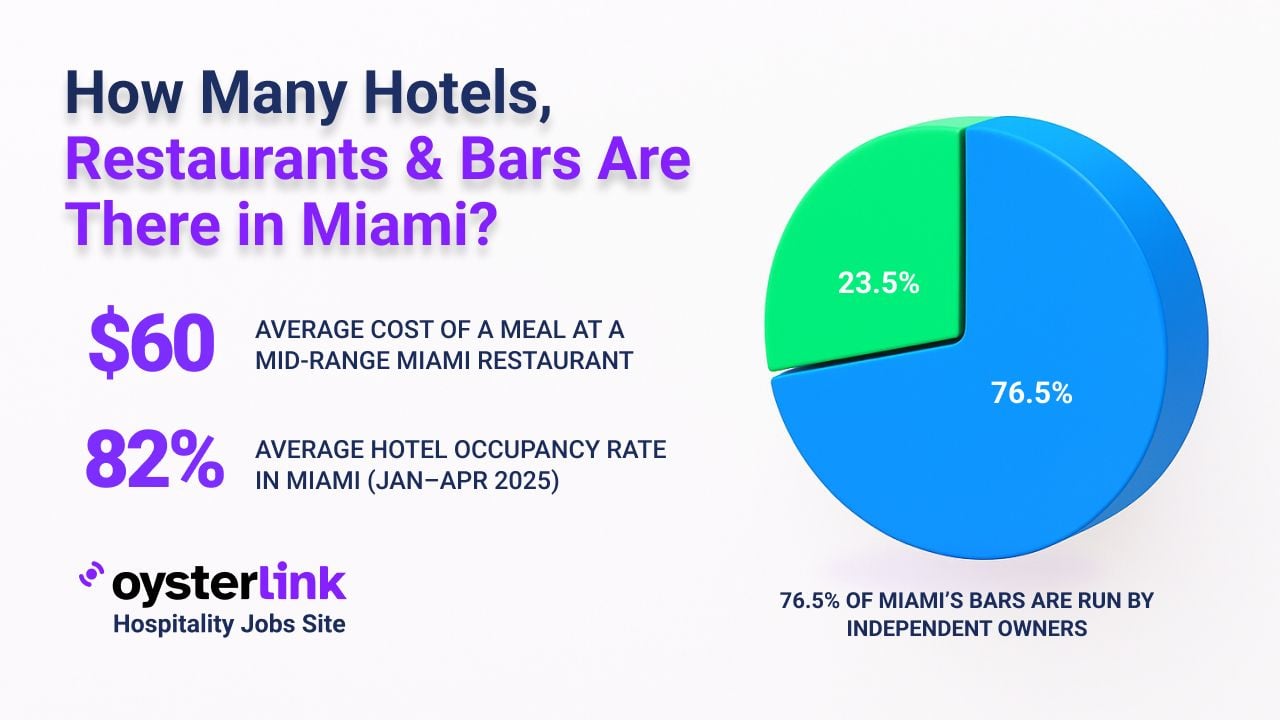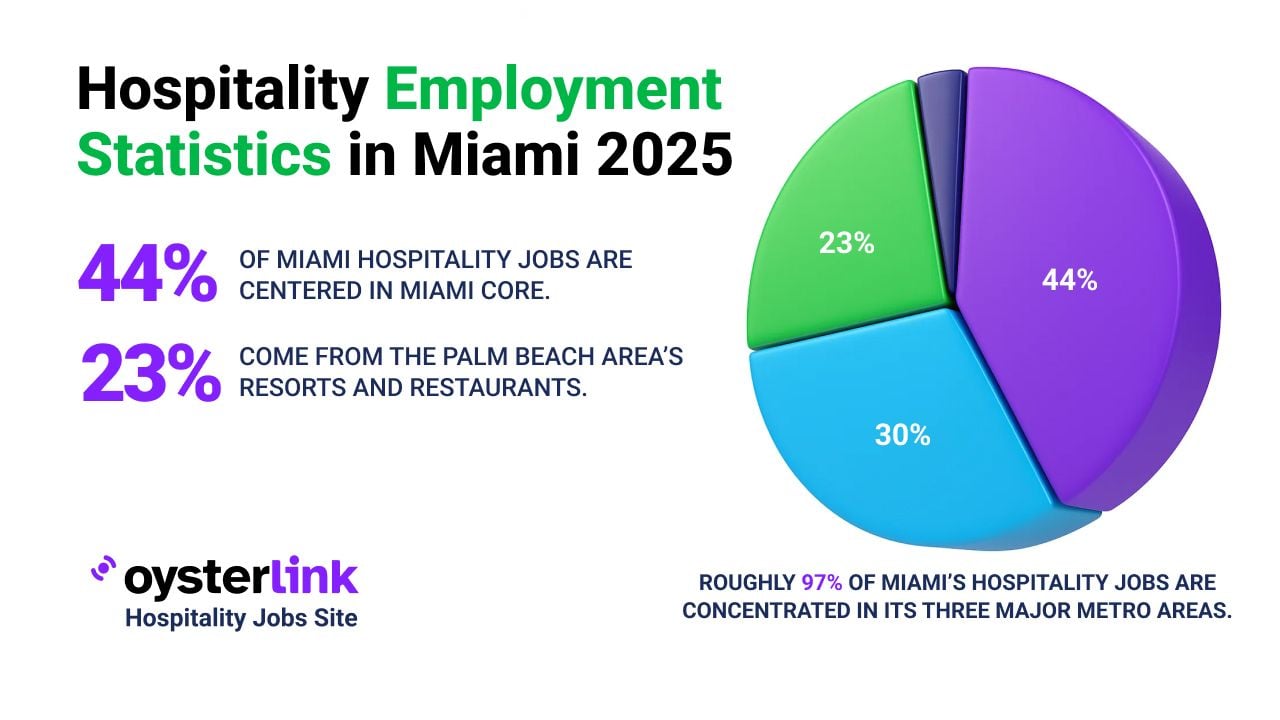San Diego Barista Workforce Demographics: Key Takeaways
- The average age of baristas nationwide is 21, with about 67% under 30, indicating a predominantly young workforce.
- Women make up approximately 74% of baristas, showing a strong female majority in the occupation.
- About 43% of baristas hold a bachelor's degree or higher, reflecting significant education levels despite the role's entry-level nature.
- In San Diego, the food preparation and serving sector, including baristas, employed over 155,000 workers with an average hourly wage of $19.13 as of May 2023.
The following article explores the demographics of baristas, focusing on age, gender, and education, with a local perspective for San Diego.
Understanding these patterns is essential for employers and policymakers in the region's food service industry.
Employers looking for strategies might find our restaurant staff hiring guide useful to optimize recruitment for this demographic.
1. Age Distribution of San Diego Baristas
While specific age statistics for baristas in San Diego are not published, national data offers significant insights.
Nationally, baristas tend to be very young workers. The average age is just 21, with roughly two-thirds (67%) under the age of 30.
This suggests that the role of barista is often held by younger adults, including high school students, college students, and those in the early stages of their careers. Many may view this job as temporary or a stepping stone to other occupations.
In San Diego's food preparation and serving industry, which includes baristas, the prevalence of younger workers likely mirrors this national trend due to the region’s large student population and vibrant hospitality sector.
Employers interested in attracting younger workers can explore effective Gen Z hospitality job posting approaches.
2. Gender Composition Among San Diego Baristas
The barista profession is notably female-dominated on a national scale, with women representing approximately 74% of the workforce.
This trend is likely reflected in San Diego, given the absence of local data specifying otherwise.
The reasons for this gender imbalance may include factors such as the social and customer-facing nature of barista work, flexible part-time hours that accommodate caregiving or education, and historic patterns in food service employment.
Employers in San Diego should recognize this gender dynamic for recruitment, retention, and workplace culture considerations.
For deeper insights, see our guide on women in hospitality leadership and its impact on workplace culture.
3. Educational Attainment of Baristas in San Diego
Contrary to some perceptions of barista work as predominantly unskilled labor, about 43% of baristas nationally hold a bachelor's degree or higher.
This remarkable figure indicates that many baristas are highly educated individuals, possibly working in coffee shops while pursuing other career goals or during transitional phases of employment.
San Diego’s diverse economy, with a strong presence of colleges, universities, and research institutes, likely contributes to a similarly educated barista workforce.
This high level of educational attainment suggests that barista roles can attract a broad range of candidates, from students to professionals seeking flexible secondary income.
Human resources can benefit from understanding this dynamic by reviewing how to become a barista to tailor job offers accordingly.
4. Local San Diego Context for Barista Employment
The food preparation and serving sector in San Diego employed approximately 155,650 individuals as of May 2023.
Within this group, the average hourly wage was $19.13, equating to an annual mean wage close to $39,790, which is competitive when compared to many entry-level positions nationwide.
This relatively high wage in San Diego reflects the cost of living in the region and the city’s demand for skilled service workers, including baristas.
These figures highlight that barista jobs in San Diego may offer better compensation than in other parts of the country, attracting both students and workers seeking sustainable income.
For salary benchmarks, employers can consult the barista salary guide.
5. Implications for Employers and Stakeholders
Understanding that San Diego’s barista workforce is likely young, predominantly female, and considerably educated helps employers tailor recruitment strategies and workplace policies.
Employers could offer flexible schedules to accommodate students, foster inclusive environments sensitive to gender dynamics, and provide opportunities for advancement or skills training to retain a motivated workforce.
For policymakers and training providers, recognizing these demographics can assist in designing programs that support workforce development aligned with the realities of the barista sector.
Managers may find our how to hire a barista resource valuable for attracting and retaining quality staff.
6. Relevant Resources for San Diego Barista Demographics
For those interested in more detailed labor market information and ongoing updates about San Diego's workforce, the following resources are valuable:
- U.S. Bureau of Labor Statistics: Occupational Employment and Wages in San Diego-Carlsbad — May 2023
- California Employment Development Department: Labor Market Information for San Diego County
- City of San Diego Official Website
Additional insights can be gathered from interviews like the interview with barista Austin Legge for a personal perspective on the San Diego barista workforce.
San Diego Barista Workforce Demographics: Conclusion
The barista workforce in San Diego is best understood through a combination of national trends and local labor market context.
Baristas tend to be young, predominantly female, and often well-educated, with many balancing educational pursuits or other career plans alongside their roles.
With over 155,000 food preparation and serving workers locally earning competitive wages, San Diego remains a dynamic environment for baristas.
Employers and industry leaders should use these insights to foster recruitment, retention, and workplace practices that meet the needs of this important segment of San Diego’s workforce.
To understand wider industry trends that affect hiring and retention, consider reading about the restaurant labor shortage and its implications for employers.




.webp)
.webp)